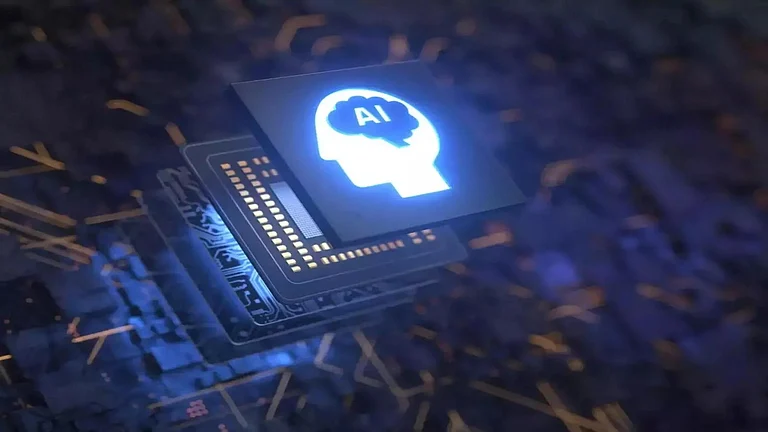Cities are evolving into intelligent systems that learn and act autonomously, reshaping mobility, energy, health, and infrastructure.
Urban AI raises risks related to governance, privacy, inequality, and resource use, making strong oversight and inclusion essential.Nations must invest in talent, environmental safeguards, and innovation to ensure intelligent cities expand opportunity rather than concentrate power.
The Next Intelligence Revolution: Why Cities Will Become the Smartest Systems on Earth
Cities are rapidly evolving from passive infrastructure into intelligent, adaptive systems. This shift from “smart” to “thinking” cities could redefine governance, opportunity, and daily life
In many cities, roads now manage traffic on their own and water systems fix leaks before they happen. These are early signs that cities are starting to think for themselves. By the end of this century, the most consequential form of intelligence may not be human or robotic. It will be urban. Once-static spaces are becoming dynamic networks that sense, learn, and act. Fueled by sensors, algorithms, and oceans of data, cities will anticipate needs, adapt autonomously, and shape decisions. They could balance energy in real time, detect disease before it spreads, and even guide policymaking.
This change is more than technological. It is political, economic, and civilizational. Choices taken now will determine whether urban intelligence expands freedom or constrains it, spreads opportunity or deepens inequality, strengthens democracy or enables control.
The leap from “smart” to “thinking” cities is already underway. In Hangzhou, Alibaba’s City Brain cut congestion so sharply the city fell from fifth to fifty-seventh on global traffic rankings. Singapore’s Virtual Singapore uses a living digital twin to simulate disaster responses and energy use. Toronto’s cancelled Quayside project, despite its demise, showed how machine learning could integrate housing, transport, and utilities from the ground up.
A smart city reacts to data; a thinking city learns from it and acts. Its sensors and processors resemble a nervous system, while flows of vehicles, water, and power mirror physical laws. With constant feedback, the city behaves like a brain. India’s Smart Cities Mission has digitized services and governance. The next step is deeper: weaving AI into infrastructure and planning — and creating governance frameworks to guide its use.
Urban intelligence rests on physical foundations: energy, water, computation, and talent. A single hyperscale data center — the “brain” of an AI city — can consume over 100 megawatts of electricity and millions of litres of water daily. Global data centers could draw more than 945 terawatt-hours a year by 2030, nearly double today’s level. In the United States, AI capacity may grow thirtyfold by 2035.
India is part of this surge. National data capacity is expected to rise from 870 megawatts in 2023 to over 1,300 by 2027, with hubs emerging in Hyderabad, Chennai, and Navi Mumbai. Some facilities already use up to 19 million litres of water a day. Ignoring limits on power, water, and land risks creating new crises while solving old ones.
Human capital is just as decisive. AI systems still depend on people to design, verify, and govern them. By 2027, global demand for skilled AI workers will exceed supply. India’s demographic advantage matters only with sustained investment in education, research, and innovation. Without it, dependence on foreign technology hardens into digital subordination and weaker sovereignty.
Governance must evolve as rapidly as the technology itself. Thinking cities generate vast data on how people move, work, and live. Those data can enable efficient services and targeted welfare — but also surveillance, bias, and manipulation. The same system that optimizes bus routes can monitor dissent. Regulation cannot be an afterthought.
Europe’s AI Act imposes strict requirements for high-risk systems: transparency, data quality, and human oversight. India is developing its own AI and data rules. But national law is only one layer. Municipalities, where algorithms most directly shape lives, need their own guardrails. That means algorithm audit boards empowered to test and halt harmful models; citizen assemblies to decide how public data are used; mandatory model cards and impact assessments for municipal AI; and “red team” stress tests for critical systems in transport, energy, water, and health. Oversight must be built in from the start, not bolted on after harm occurs.
Inclusion should be part of AI from the beginning, not added later. AI learns from data — so if people without IDs, phones, or stable homes are not in the data, they won’t get the services either. This has already caused harm: in the U.S., AI used in policing targeted minorities, and in the Netherlands, a welfare system wrongly punished many families. If future cities learn mostly from rich and connected people, they will become unfair from the inside.
Building inclusive systems demands representative datasets, rigorous bias testing, and meaningful participation from affected communities. India’s digital public infrastructure — Aadhaar, UPI, and allied platforms — shows that scale and inclusion can coexist, but only when deliberately pursued. The real test of a thinking city is not the speed of its computation but the breadth of its inclusion.
Cities are also emerging as strategic assets in a shifting geopolitical landscape. Shenzhen’s rise as a hardware capital accelerated China’s technological ascent. Be’er Sheva’s cybersecurity cluster reshaped Israel’s global profile. Global data capacity is likely to triple by 2030, concentrating in a handful of urban hubs. Yet more than half of the top 100 sites already face high climate risk — a figure likely to reach 68% by 2040, with water scarcity the sharpest constraint.
For India, passivity is not an option. Attracting investment alone is insufficient. The country needs local R&D, ethical and environmental safeguards, and governance grounded in democratic values. Otherwise, cities could become marketplaces for foreign ambitions rather than engines of national strategy. India’s global influence may depend as much on whether Mumbai, Bengaluru, and Delhi evolve into intelligent, adaptive cities as on satellites or nuclear reactors.
Ultimately, this is a civilizational choice. Humanity has long built cities in its own image; now cities are beginning to build minds of their own. They can become our strongest allies or our sharpest rivals. The difference will lie less in their intelligence than in our wisdom.
The emerging urban mind will not wear a face or speak a single language. It will think in traffic flows, water currents, energy pulses, and social patterns. As it awakens — in Mumbai and Bengaluru as surely as in Hangzhou or Toronto — the decisive question is not how it thinks but for whom. Build capabilities, build guardrails, and build trust, and the city will learn to think for people rather than over them.
We must remain its authors, not its obedient subjects.
(Nishant Sahdev is a theoretical physicist at the University of North Carolina, United States, and author of the forthcoming book “Last Equation Before Silence.” X: @NishantSahdev)
Tags



